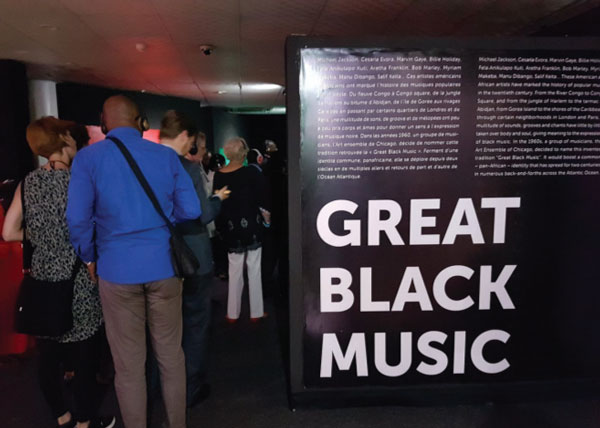
Great Black Music exhibition documents the protest history of black music
Kigali, Rwanda| JOSEPH ONDIEK| Black music played a large part in bringing freedom, not only in the United States from slavery and civil rights movement but also in Africa and the Caribbean. It raised the consciousness of those suffering from different facets of enslavement.
An exhibition of the music titled `Great Black Music’ is running in Kigali to celebrate the iconic figures of black music that influenced the history of blacks through music.
Being held on the ground floor of Kigali Public Library in Kacyiru, the exhibition which started in May 12 and ends in August 25, features music legends like Michael Jackson, Marvin Gaye, Billy Halliday, Fela Kuti, Agetha Franklin, Bob Marley, Miriam Makeba, Manu Dibango, Salif Keita.
“These American and African artistes have marked the history of popular music in the 20th Century,”the exhibition flier says.
It goes on to describe how from River Congo to Congo Square, and from the jungle of Harlem to the tarmac of Abidjan, from Gorea Island to the shores of the Caribbean, through certain neighbourhoods of London and Paris, a multitude of sounds, grooves, chants have little by little taken over the body and soul, giving expression of black music.
Exhibition goers use earphones and a touch screen device that looks like a mobile phone to listen to the commentary on the musicians: their history, the evolution of black music, how black music has led to change in culture and music throughout where the blacks are.
They are told how, historically, black Americans have been among the primary influencers of music culture, for instance Rock n Roll. A documentary on this says the genres that were born of Black misery, triumph; endurance, protest, and expression have changed the way the entire world sounds. But it’s undeniable that many of these songs were and still are shaped by the fatigue of the constant protest that comes with Black existence.
In the 60s, it says, the Art Ensemble of Chicago decided to name this invented tradition “Great Black Music” to boost a common pan-African identity that has spread for two centuries in numerous back-and-forth across the Atlantic Ocean.
The Great Black Music exhibition spans three partitioned rooms, with the first room having 22 small screens where you are going to listen to documentaries of not only the musicians themselves in particular, but also some genres that defined authentic black music, like reggae, hip-hop, soul, disco music, rumba, lingala, and Cuban music among others in general.
The second room is exclusively dedicated to African continent music: East, Central, South and West African music. The documentaries also explain the evolution of these kinds of music, and popular musicians who were responsible for that particular change at that particular moment in history, and what brought about the change of the genre. There are 5 giant screens, but you need to pick your own earphone and your touch screen device.
The third room also has 20 small screens, but the difference is that each screen has three documentaries on different black musicians and how their protest songs influenced change for black Africans across the continents. Bob Marley, Elvis Presley, Nina Simeone, Michael Jackson, Salif Keita among others; all their songs and how they impacted on black history are explained in details.
There are also gruesome images of black musicians singing while being ruthlessly beaten. When you click number 44 in your mobile phone-like screen, you are going to clearly hear the full version of Martin Luther King Jr. “ I Have a Dream” with a new meaning.
According to Rugamba Tanguay of Rwanda Arts Initiative, one of the exhibition organisers, “music can travel without a visa”.
Greg Bakunzi, the Managing Director of Amahoro Tours, and one of the attendees to the ongoing exhibitions told The Independent that such exhibitions are crucial not only in educating the young generation where the blacks came from, their tortured history and how music, like visual art can be an agent to catalyse change and teach generations about the role of music in changing the society, “since music never dies.”
Aljobalove Ismael Ndikuimana, a Rwanda reggae artist decried the lack of Rwanda musicians in the exhibition, but adds that this is a positive lesson for them to learn and use music to pass positive social messages. After Rwanda, the exhibition heads to New York.
 The Independent Uganda: You get the Truth we Pay the Price
The Independent Uganda: You get the Truth we Pay the Price


